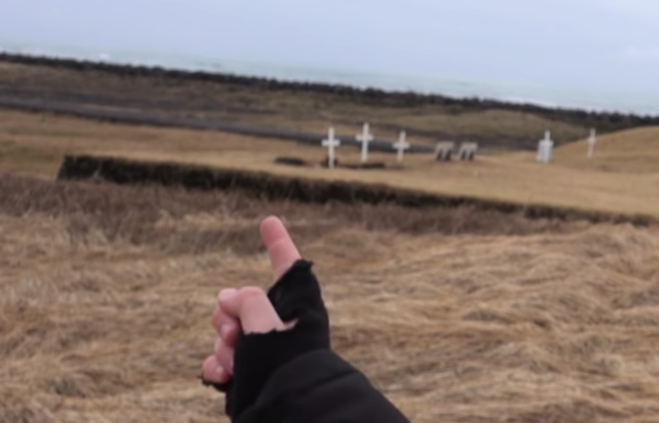
In many aspects of photography and life, less is more. As landscape photographers, we are constantly overwhelmed with a variety of details in each scene due to the vast beauty Mother Nature has to offer. This is where minimalist landscape photography shines. Minimalist landscape photography is a style that emphasizes simplicity, using a limited number of elements to create a compelling, uncluttered image. This genre seeks to convey the essence of a scene by stripping it down to its fundamental components, often evoking powerful emotions and reflections. In this article, we’ll discover the beauty of minimalist landscape photography and provide you with some examples and tips.
Minimalist Landscape Photography Video
Come along with me on this episode of Photographing Iceland where we cover tips on how to capture minimalist landscape photography. I came to Strandarkirkja, a lone church in Iceland with a preconceived idea of photographing this church in a minimalist fashion, isolating the church as the main subject and letting the rest of the landscape be a part of the frame without overpowering it.
Minimalist Landscape Photography Video
Let’s review the tips from this video and a few additional tips for creating impactful minimalist landscape photography.
Start with Determining Your Composition
Before you pick up your camera, decide on what elements of the scene you want to include in your frame. This could potentially mean switching from shooting in landscape orientation to portrait depending on what you want to conceal vs. reveal.

When I arrived I noticed this wall in front of the building that was distracting the view and immediately thought to capture the scene from a lower angle to hide it.
Choose the appropriate lens for the scene
The choice of lens can greatly influence the composition of your shot. A wide-angle lens captures a broad view, which is beneficial for highlighting the vastness or emptiness of a scene. While telephoto lenses can be used to isolate distant subjects, for most minimalist landscape shots, a medium to wide-angle lens is the best choice.
Changing my perspective and moving closer to the ground required me to choose a lens that would still allow me to keep the scene minimalistic, filling the majority of the frame with sky. Using a wide-angle lens @ 16mm, I was able to capture a greater portion of the sky and used it as negative space to emphasize the church.
Dial in the proper exposure settings
With minimalist landscape photography, there is no objective correct exposure. Use the exposure that matches your creative vision. That might be underexposing an image to clip and hide parts of a scene or overexposing an image to blow out and hide other parts of the scene.

Starting at ISO 100 to maximize dynamic range, I bumped up my aperture to f/11 to capture the detail of my foreground. From here I will check my Histogram and dial in the appropriate shutter speed to ensure I don’t blow out the clouds and sky in the scene.
Additional Tips To Consider
In addition to the tips provided above, here are some other considerations to refine your minimalist landscape photography.
Understand the Different Ways to Isolate Your Subject
One of the key elements is ensuring that the subject stands out. This can be achieved by isolating your subject from the surrounding elements, thereby making it the focal point. You can achieve this by utilizing depth of field to blur out the background or foreground. You can also composing the shot in a way that naturally separates the subject from other elements.
Compose Your Minimalist Landscapes Without Extra Elements
Every element in your frame should have a purpose. Avoid including elements that don’t contribute to the overall message or feeling you’re aiming to convey. This may mean waiting for a moving object to leave your frame or changing your angle to exclude distractions.
Stick to Fewer Colors to Increase the Minimalist Feel of Your Images
Minimalism thrives on simplicity, and that includes a simplified color palette. Images that use a monochromatic or limited color palette can often appear more striking and focused. This doesn’t mean you should avoid color, but rather, be intentional with your choices.
Try the Best Times for Minimalist Landscape Photography
The golden hour – the period shortly after sunrise and just before sunset – provides a soft, diffused light. This light can simplify the landscape by reducing harsh contrasts and shadows, making it ideal for minimalist photography. These times of the day also provide opportunities for silhouettes. Combining minimalism with silhouettes during sunrise or sunset can create a mysterious and evocative image.
Use Photo Editing to Finalize Your Photo
Post-processing is essential in achieving the perfect minimalist shot. Techniques like dodging and burning can be used to highlight or downplay certain areas. Cropping can help in removing unwanted elements, while spot removal can erase distractions. Don’t be afraid to manipulate the image to reach your envisioned outcome.
More Information
Minimalist landscape photography is all about capturing the essence of a scene, using simplicity as your guide. By focusing on the essential elements, choosing the right time and equipment, and harnessing the power of post-processing, you can create striking images that leave a lasting impression on the viewer.
Join me on my Youtube landscape photography journey as I travel around the world capturing the beauty Earth has to offer. If you enjoyed this video you can tune into my Photographing Iceland Series which includes 30+ episodes filled with shooting tips, gear recommendations, and travel advice.





Get Connected!